Hong Kong, Cezanne, Renoir, and More
On our first drizzly day in Hong Kong, we decided to spend a few hours in the company of Cezanne and Renoir at the Hong Kong Museum of Art. That was only the beginning!
An hour before our scheduled docking in Hong Kong, we were already checking our watches and the weather app. Low clouds obscured much of the land and clung to the water like a heavy blanket.
We were set to take the tram up Victoria Peak and then cruise Hong Kong Harbor in a sampan in a couple of hours, but it seemed foolish to go to the top of Victoria for the view—we could barely see the foothills, and there was no mountain in sight
Instead, equipped with our raincoats and umbrellas, we set off for a stroll near the port.
The Hong Kong Museum of Art was a ten minute walk from the port, but we took a few wrong turns and it took us close to an hour to get there!
To our surprise, we walked into the Hong Kong Museum of Art, and the featured exhibition was "Cezanne and Renoir Looking at the World." It was hard to pass up this duo, so we bought tickets for the special event. (The museum offers free admission except for their featured exhibitions.)
Sherpa and I had recently attended a Cezanne exhibition at the Art Institute of Chicago, and we’d had to wait several hours before our tickets were called. In the Hong Kong museum, we walked right in and wandered freely around the exhibit of over 50 paintings.
Still Life with Soup Tureen ca. 1877, oil on canvas, by Paul Cezanne. Compare this painting to the next one by Renoir.
Peaches (1881) oil on canvas by Pierre-Auguste Renoir.
Algerian Landscape (The Ravine of the Wild Women) 1881, oil on canvas by Pierre-Auguste Renoir. The blues in this painting really pop, and I love that the title includes “wild women!”
We took a break after the first two exhibits to check on the weather—it was still cloudy with limited visibility. No need to hurry outside, so we headed to the next gallery.
Here is a small sampling of some of our favorite pieces of art:
Bonsai (2), 2009, permanent ink, acrylic sheet, metal hook, by Kum Chi-keung. In contrast to the typical bamboo bird cages found throughout Southeast Asia, the artist created this see-through version: empty, but surrounded by ink paintings of trees. Like art poetry.
Migratory birds, 2022-2024, a kinetic installation by Joseph Chan Ka-chun.
Metal tree, 2016, mixed media, by Lam Yau-sum. The artist arranged numerous discarded metal objects from construction sites into this stunning representation of a tree. The shadow play is exquisite.
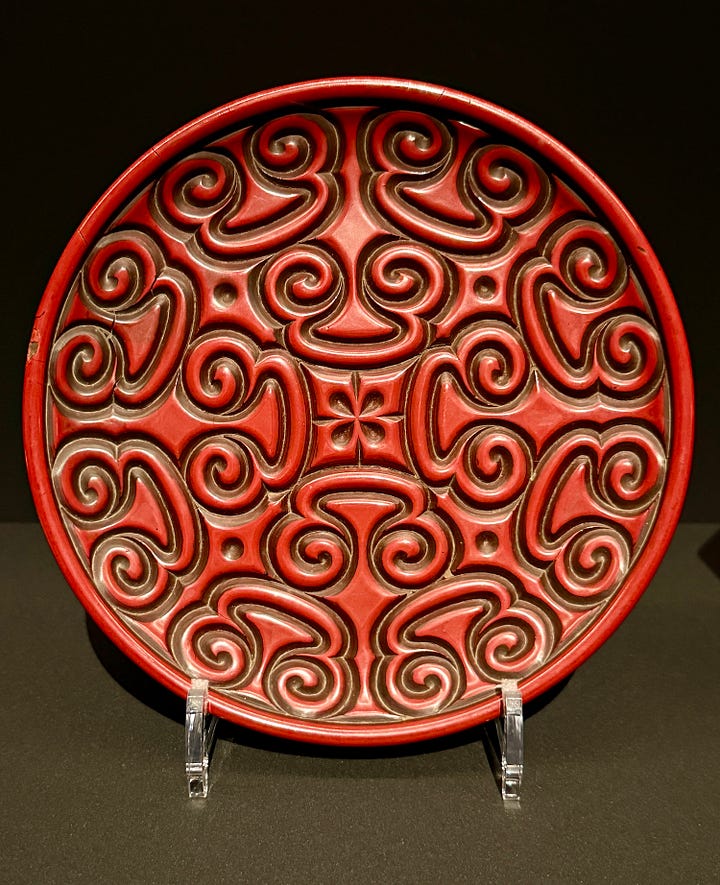
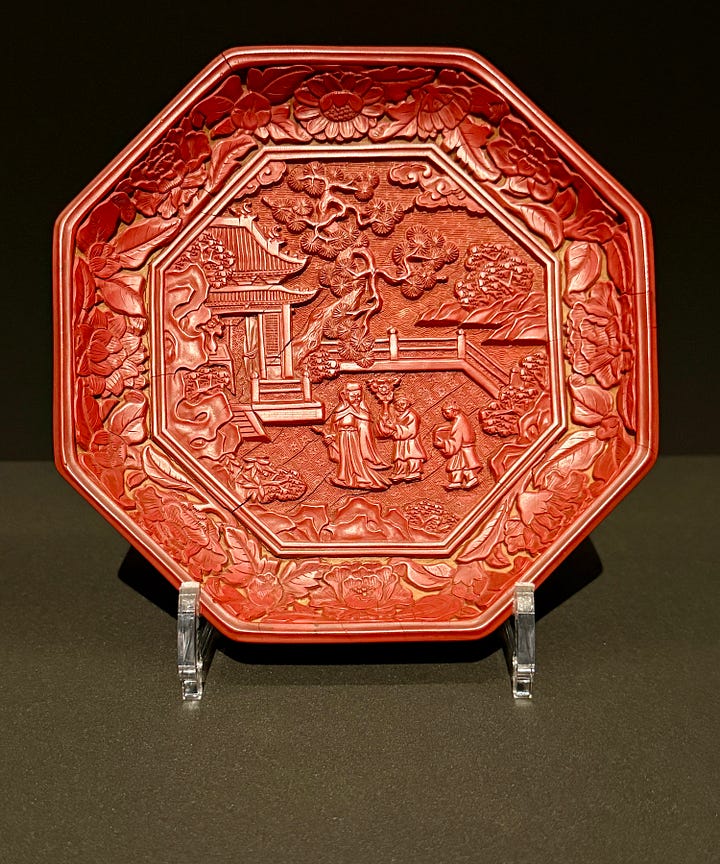
Red lacquer plate with dragons amidst cloud design, 18th century.
Red lacquer dish with guri design, 14th century.
Ripple, mineral pigment and metallic leaf on paper by Chung Tai-fu. The mineral paints on this large piece shimmered in the light and changed hues as we studied the artwork from different angles.
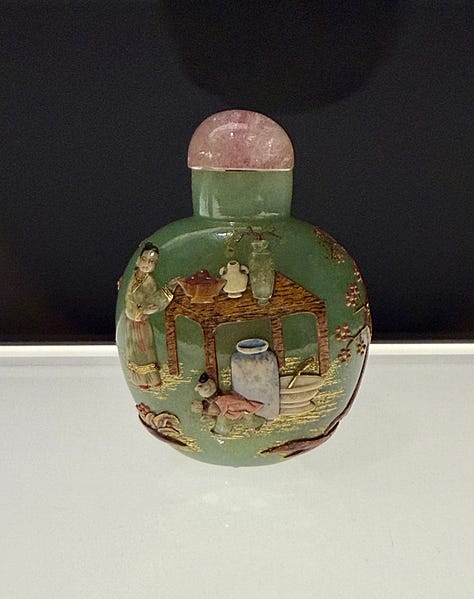
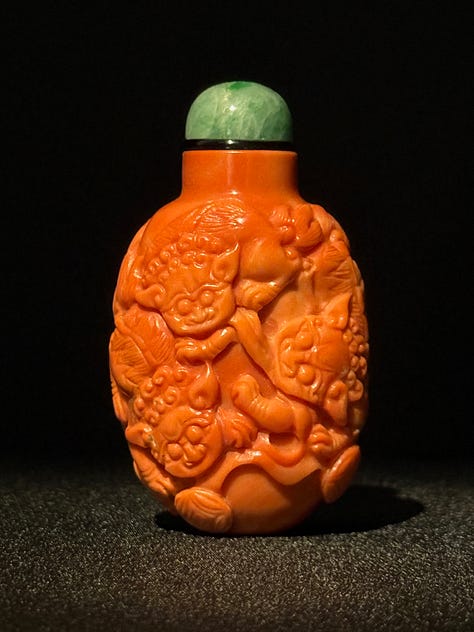
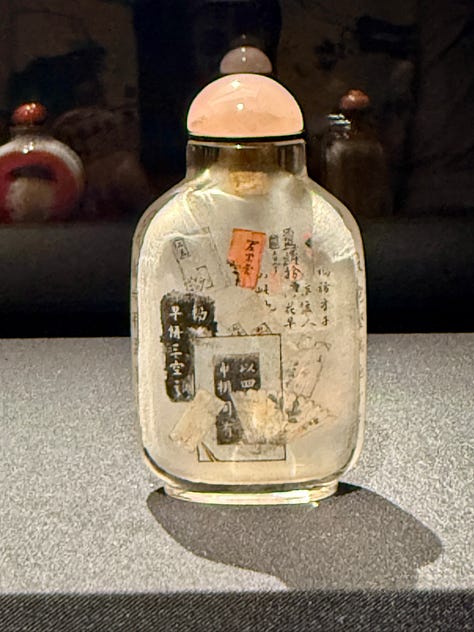
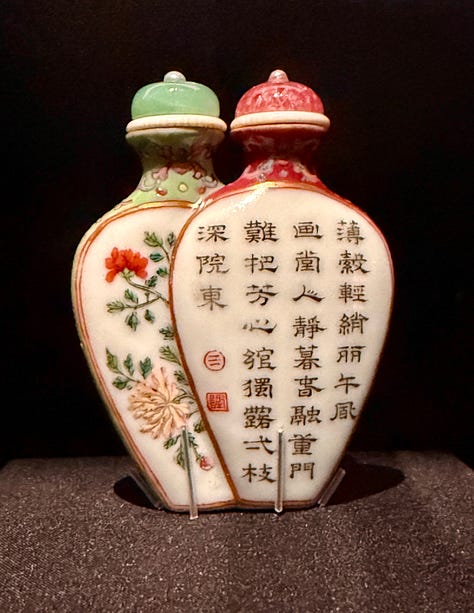
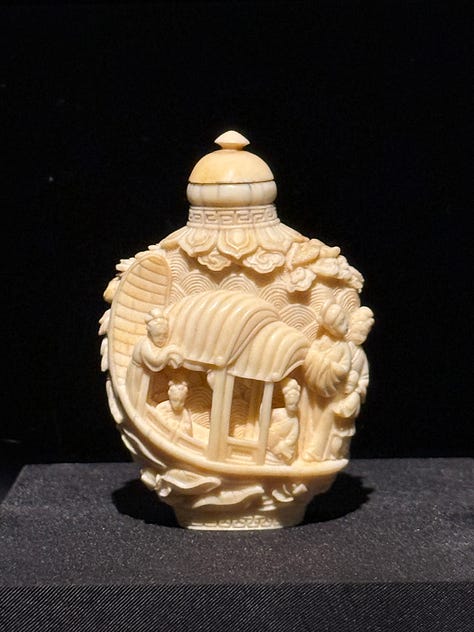
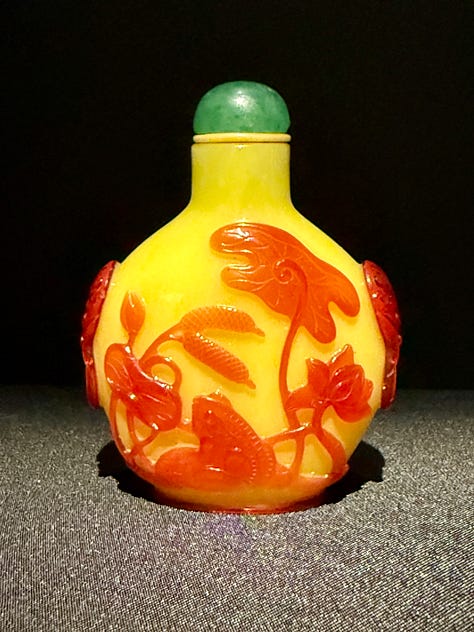
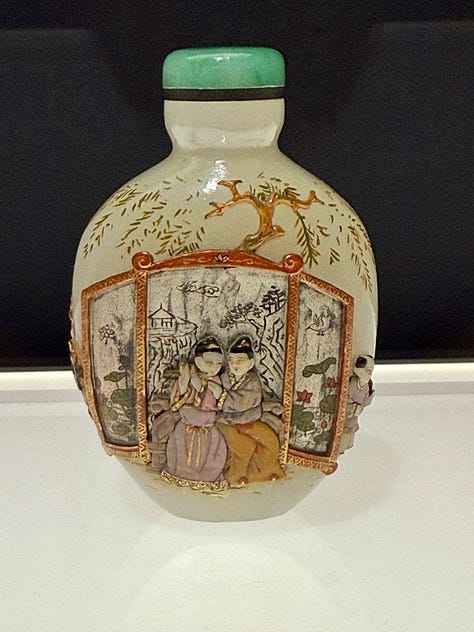
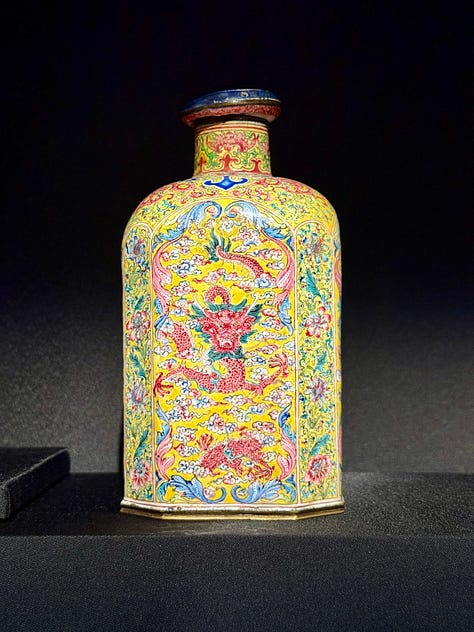
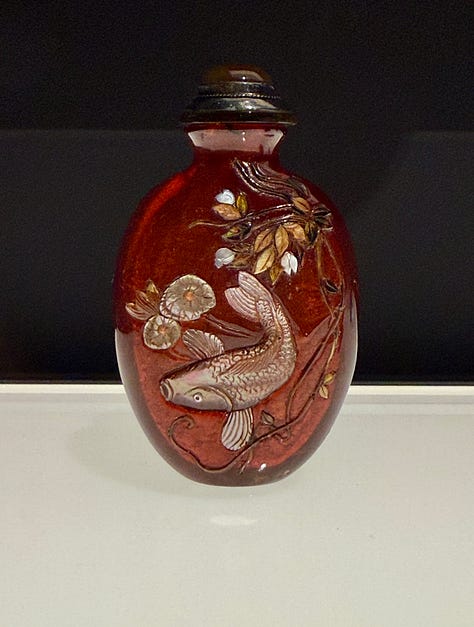
One of the most incredible exhibits we’ve encountered during our world travels was a huge gallery at the art museum dedicated to one gentleman’s snuff bottle collection. There were over a thousand bottles, all arranged masterfully, all labeled with compelling facts and stories, and each a miniature work of art. Christopher Sin dedicated much of his life to collecting and studying these bottles, and his wife, Josephine Sin, donated the collection to the art museum to honor her late husband and allow the public to appreciate this unique Chinese art form.
After walking to and from the art museum, we needed sustenance. We followed a restaurant sign that directed us down an escalator into another bustling underground layer of Hong Kong that we hadn’t even realized existed. There, we found a restaurant with a free table—the last one available—and a menu in both Chinese and English. Yay!
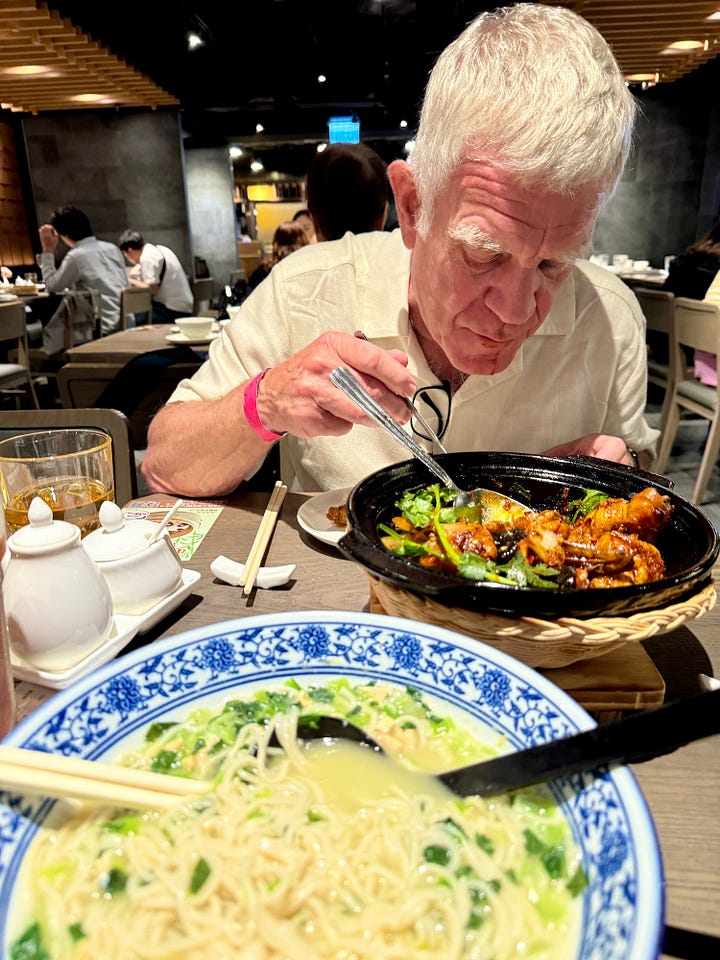
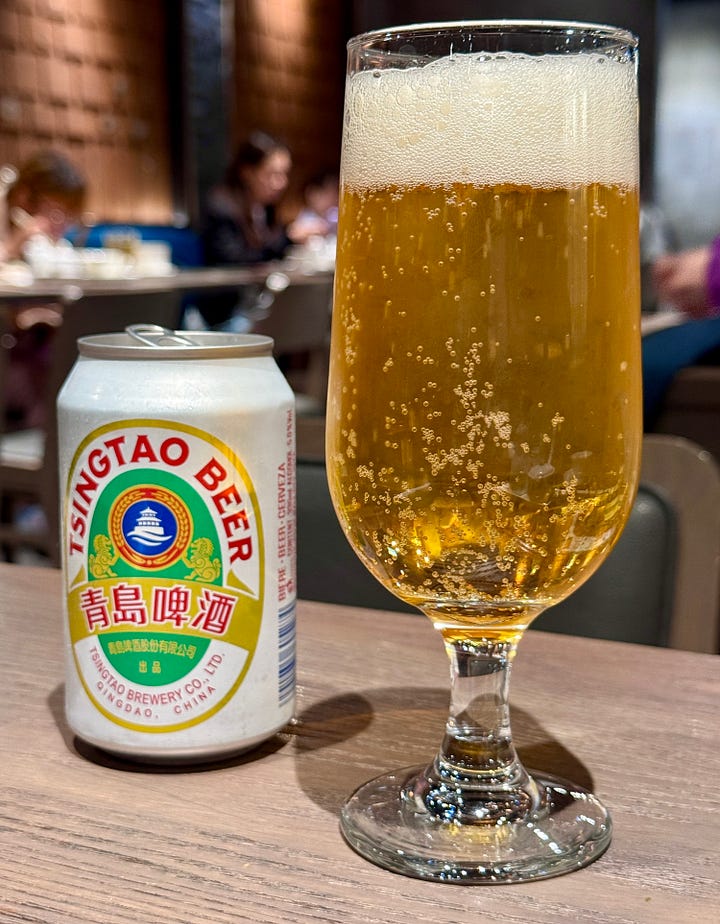
Destination meal—glass mugs of oolong tea followed by pork dumplings, then spicy clay pot chicken for Sherpa and noodles with chicken for me. Also, the largest glass of iced tea I’ve ever seen, served with at least six slices of lemon and accompanied by a little jug of clear liquid, which the server kindly explained was “sweet syrup, pour it in.” The iced tea was a “gift” we received because Sherpa ordered the special. Sherpa didn’t need the tea because he ordered a Tsingtao Beer. A second beer was delivered to our table midway through our meal, another “gift,” although we weren’t sure of the reason. Our meal—two meals, one order of dumplings, two beers, one iced tea, and two oolong teas—came to 370.5 Hong Kong dollars or $47.69 USD.
Tsingtao Beer is brewed by Tsingtao Brewing Co. in Qingdao, China. (Since 1903) 5% ABV. Sherpa’s Take: Medium gold, smooth and malty, lightly carbonated. Light sour notes, a bit like wilted parsley. Aftertaste lingers and fades with a slight sweetness. Pleasant Asian lager. 5.5/10.
I loved this almost intentionally arranged photograph of foodstuffs. The restaurant was underground, located in a maze of shops, fast food places, convenience stores, and sit-down restaurants. Their storage apparently extends into the nearby hallways
Tonight: We go on a Regent-included excursion to a night market and an open bus ride to see the city lights. We’re overnight in Hong Kong.

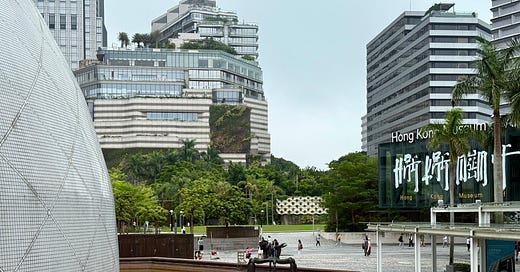


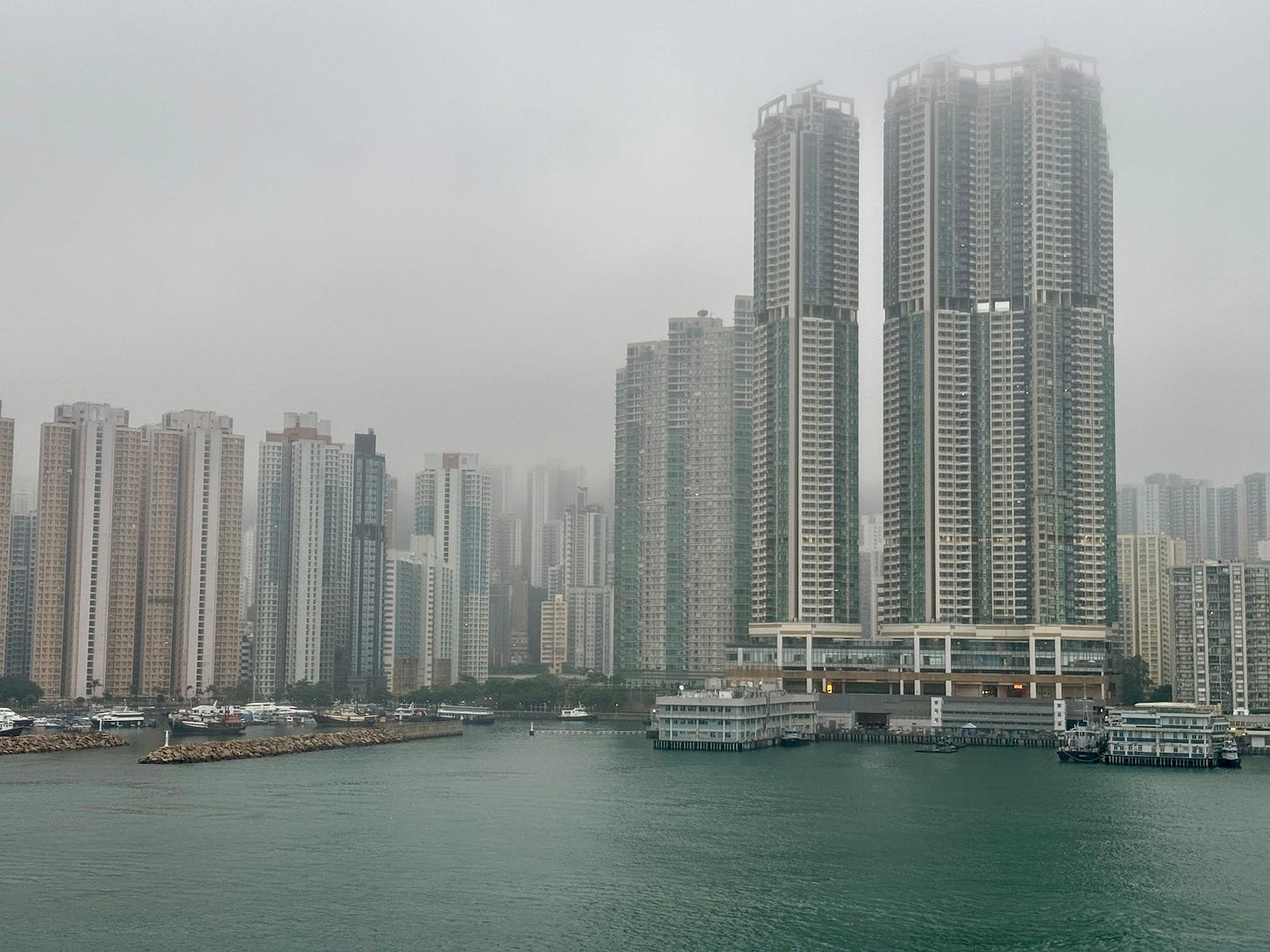
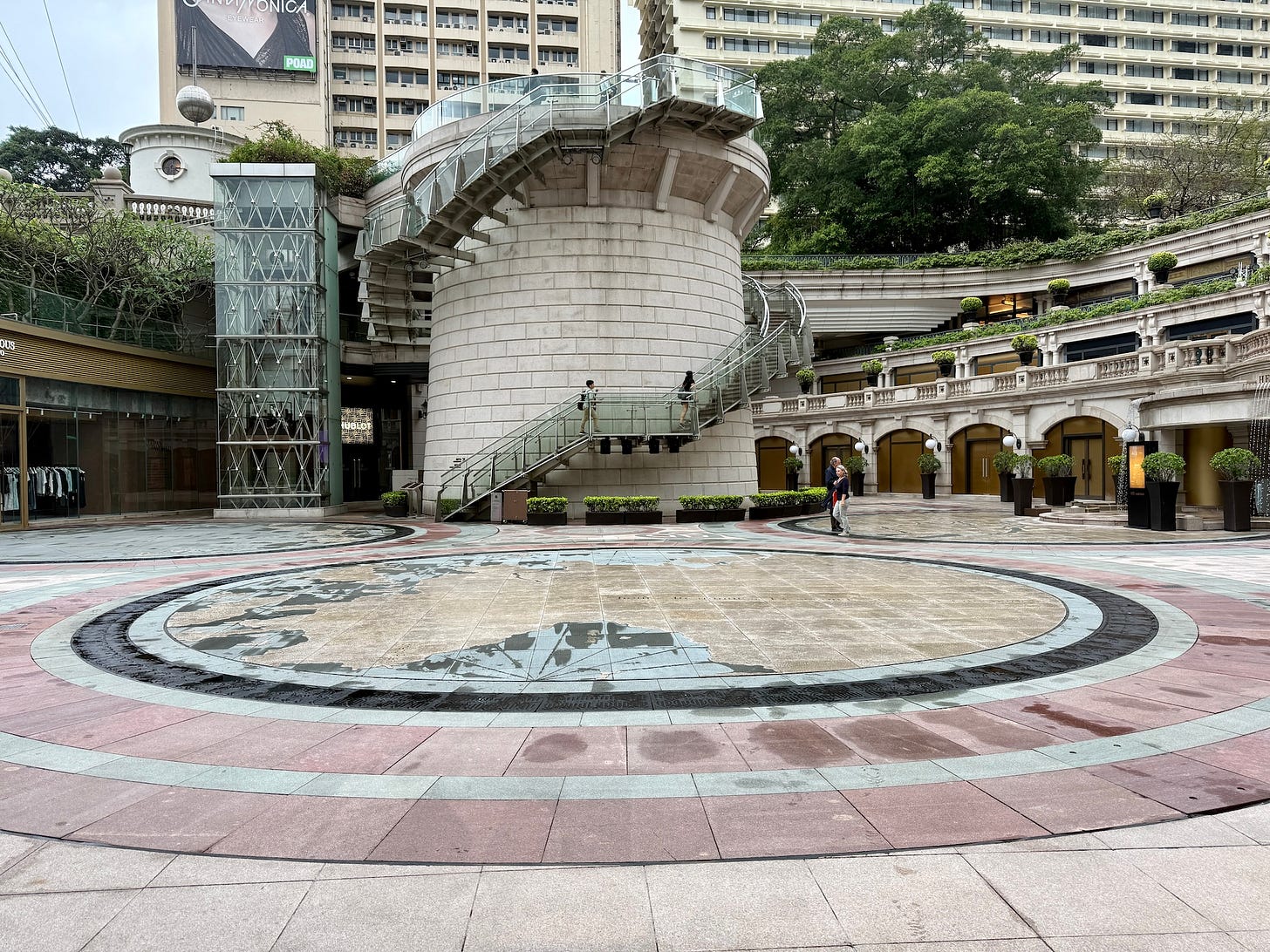
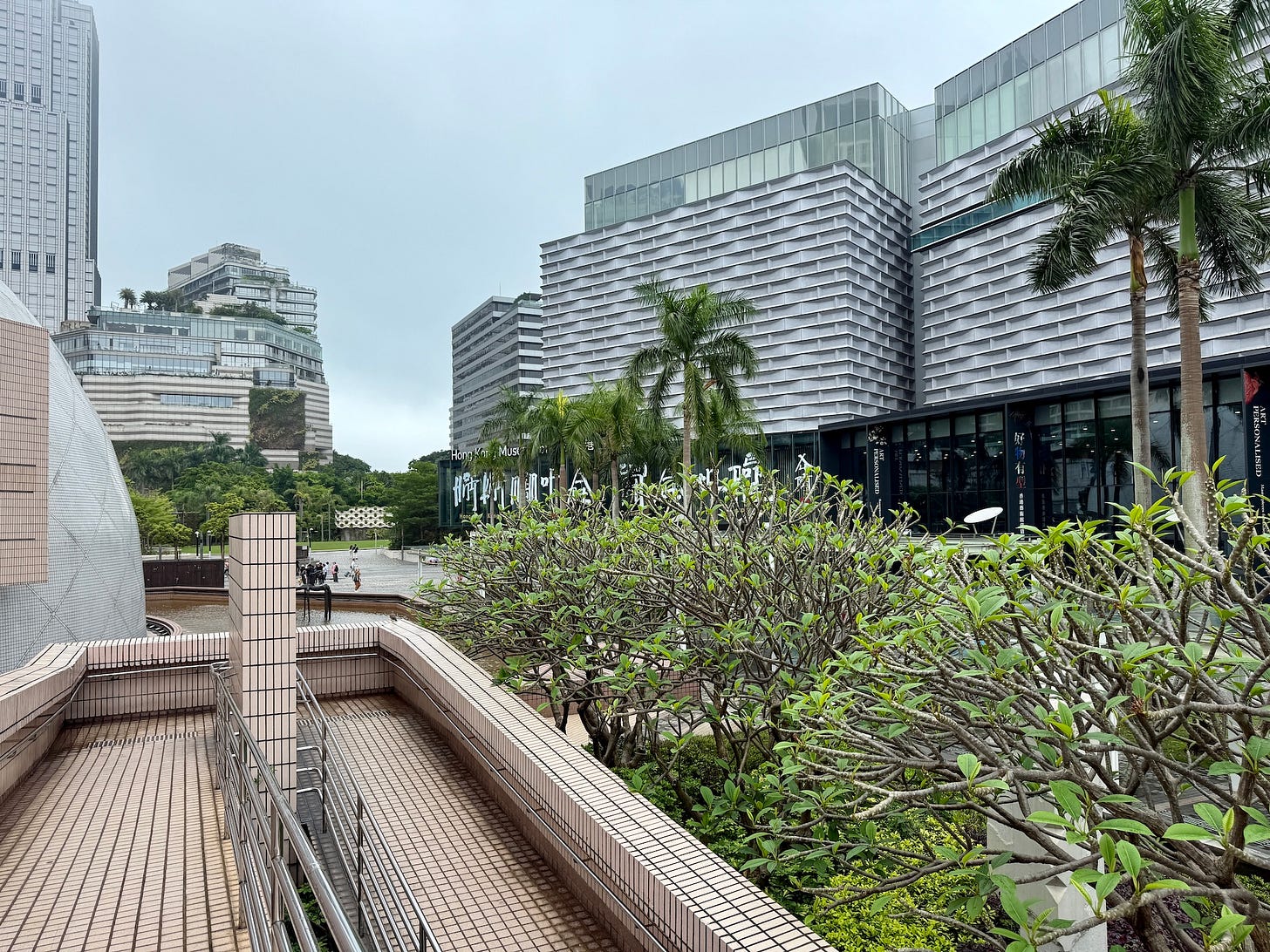

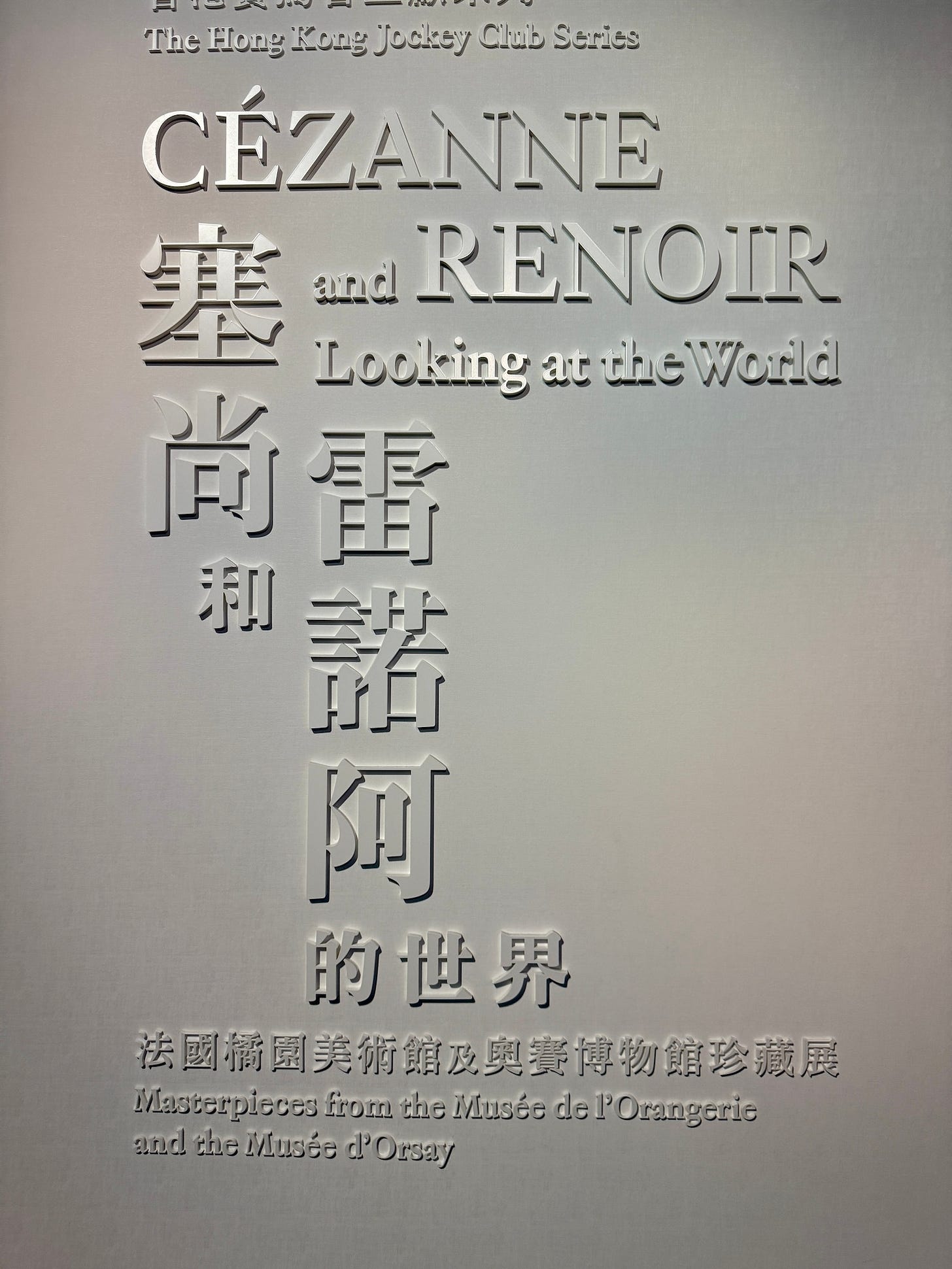
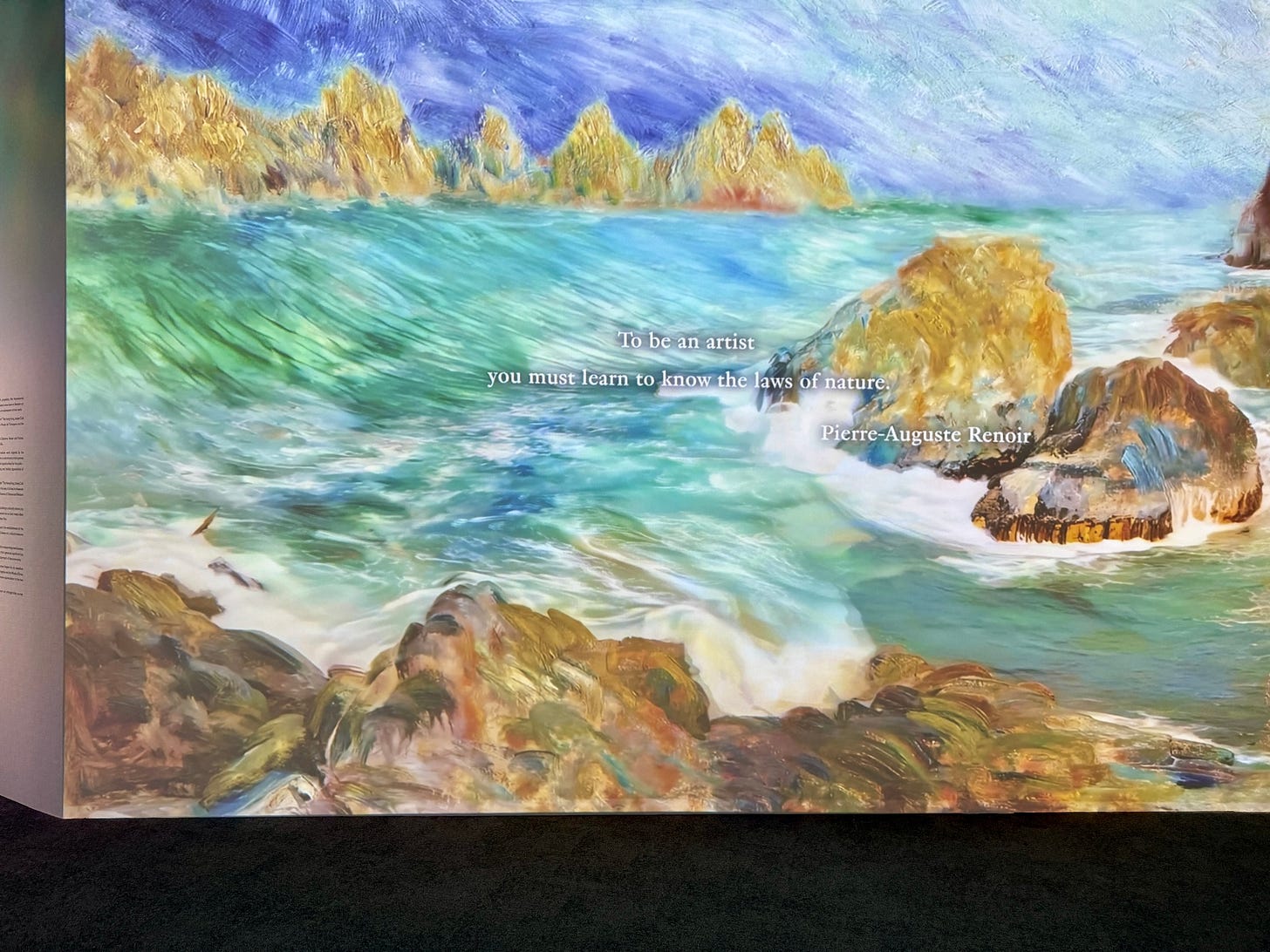

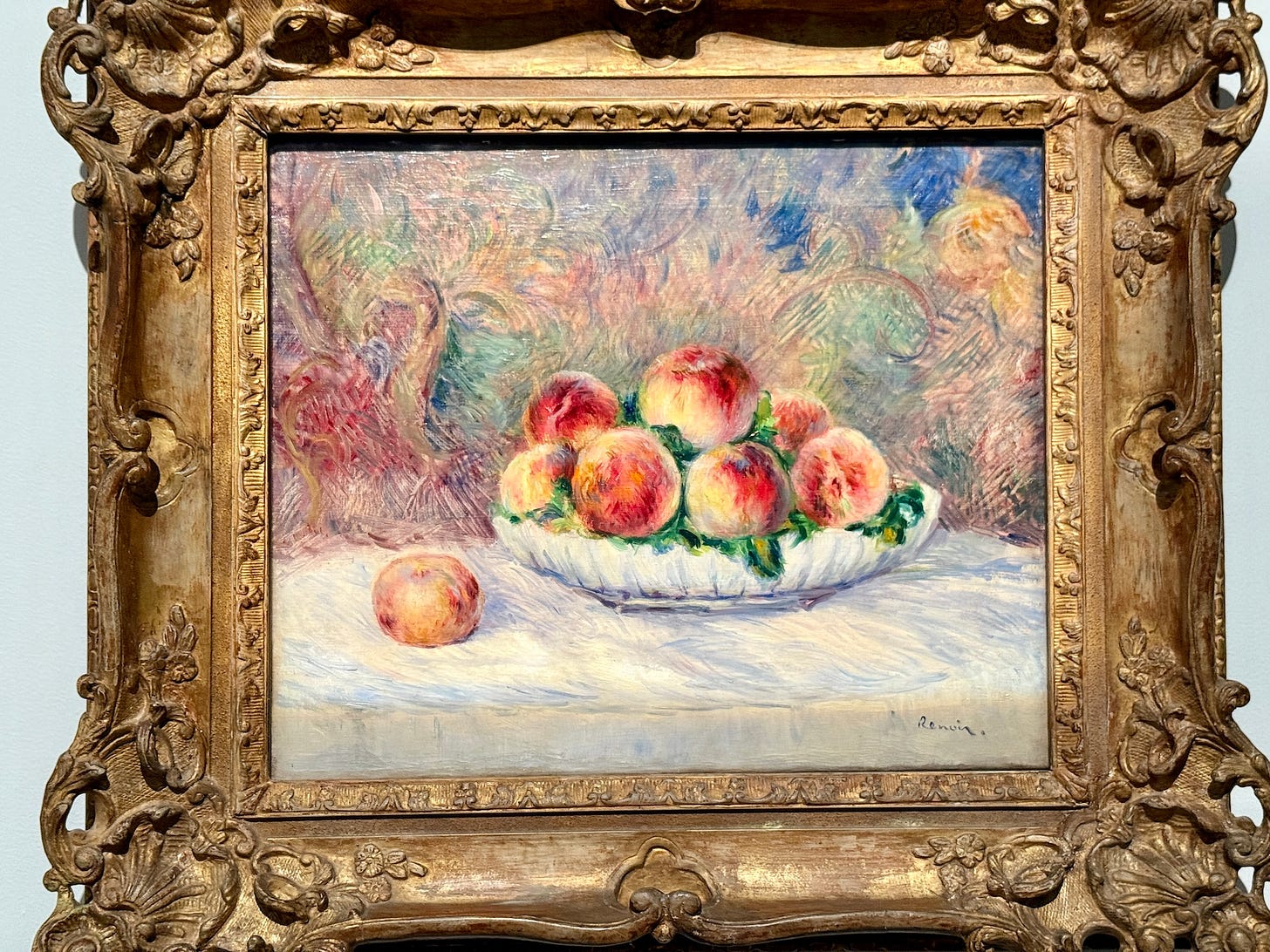
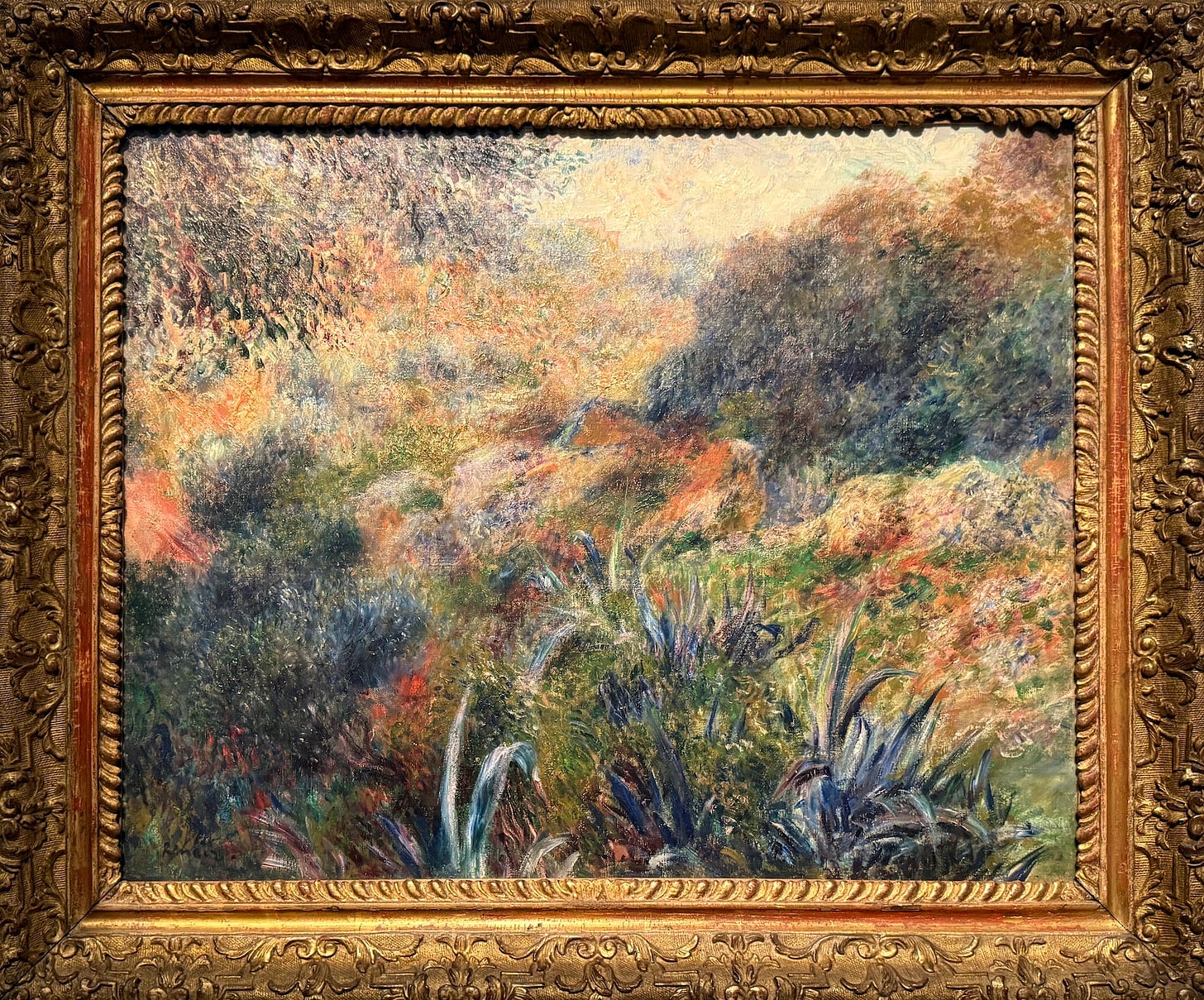
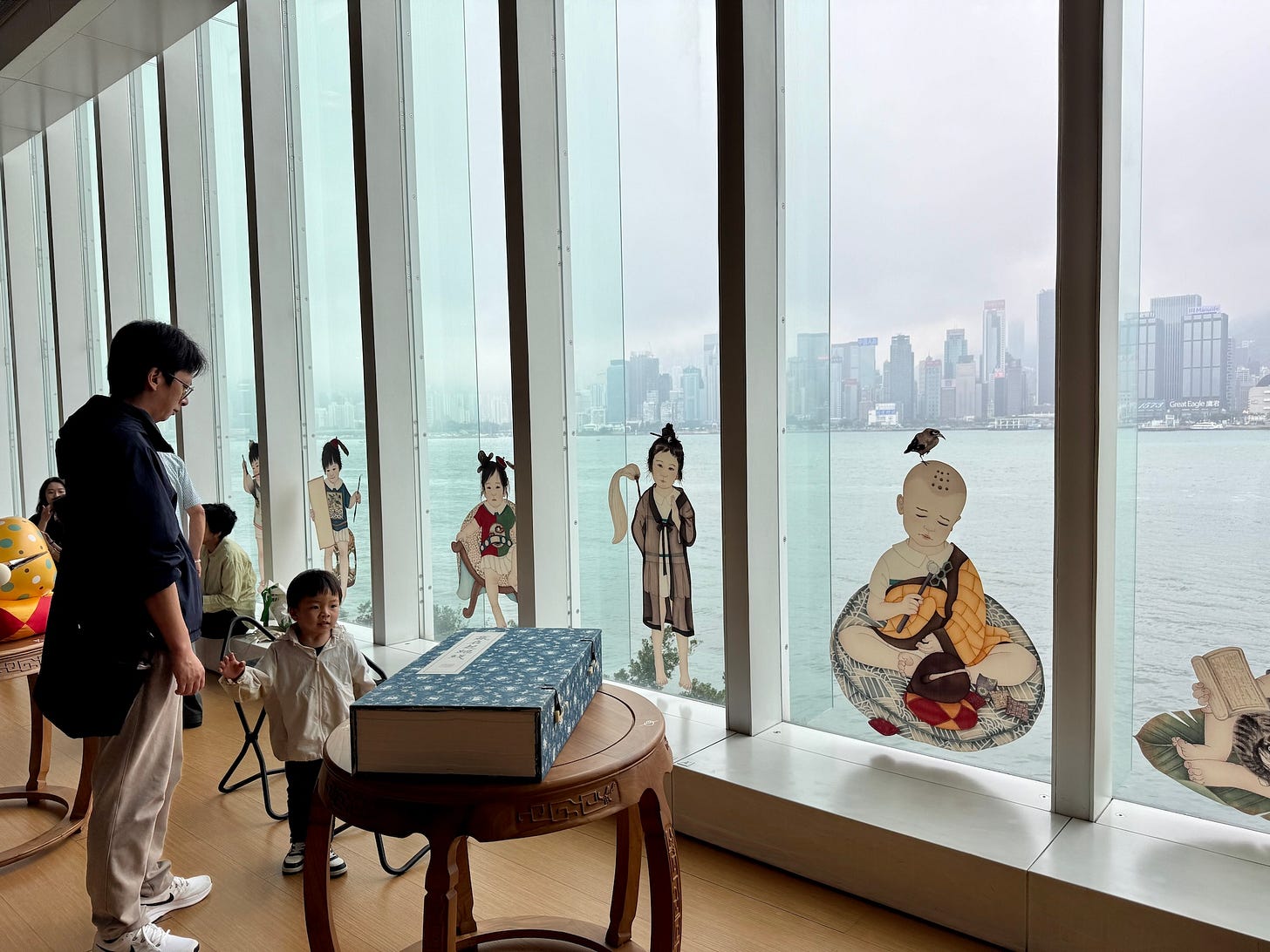
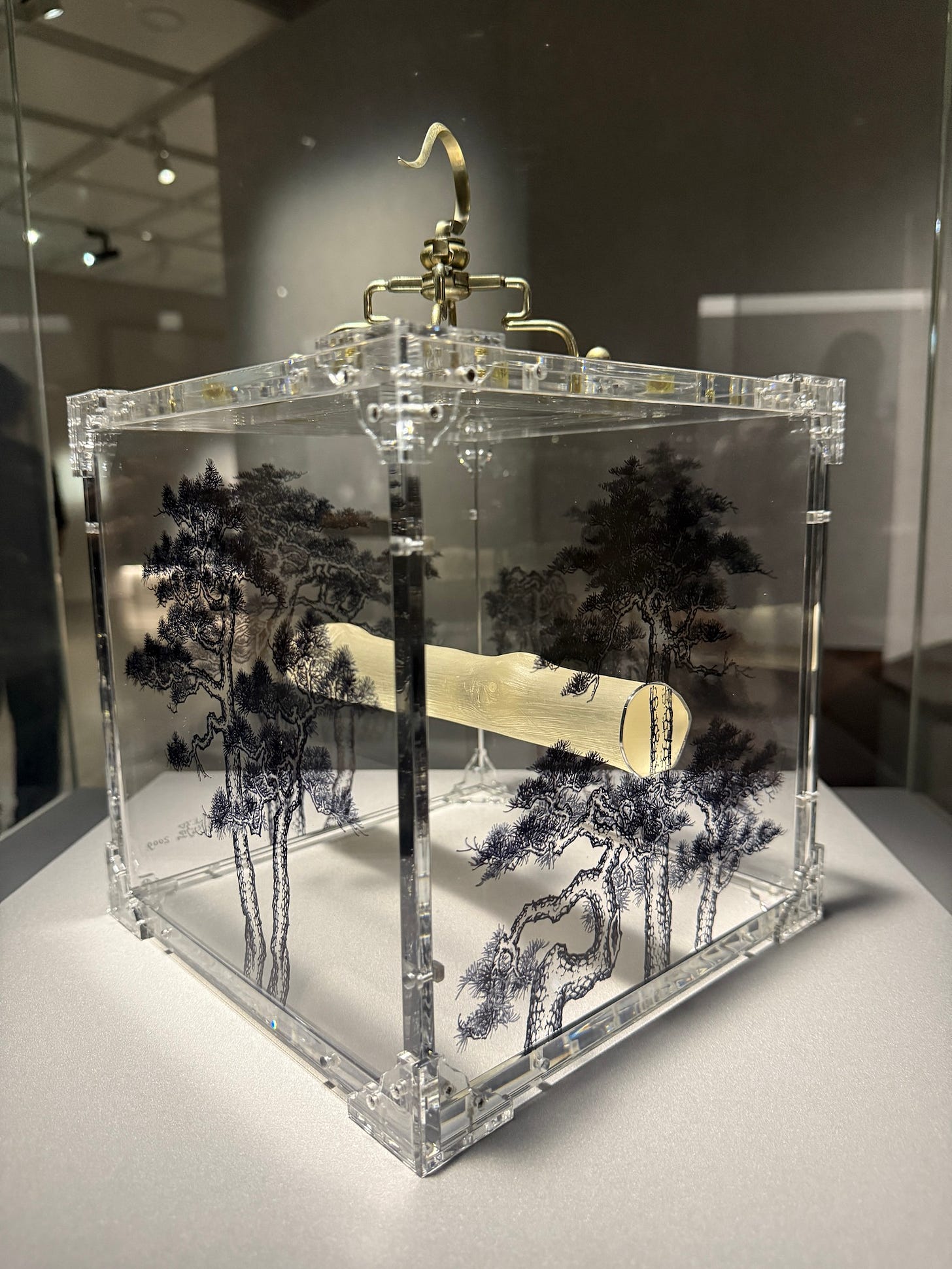
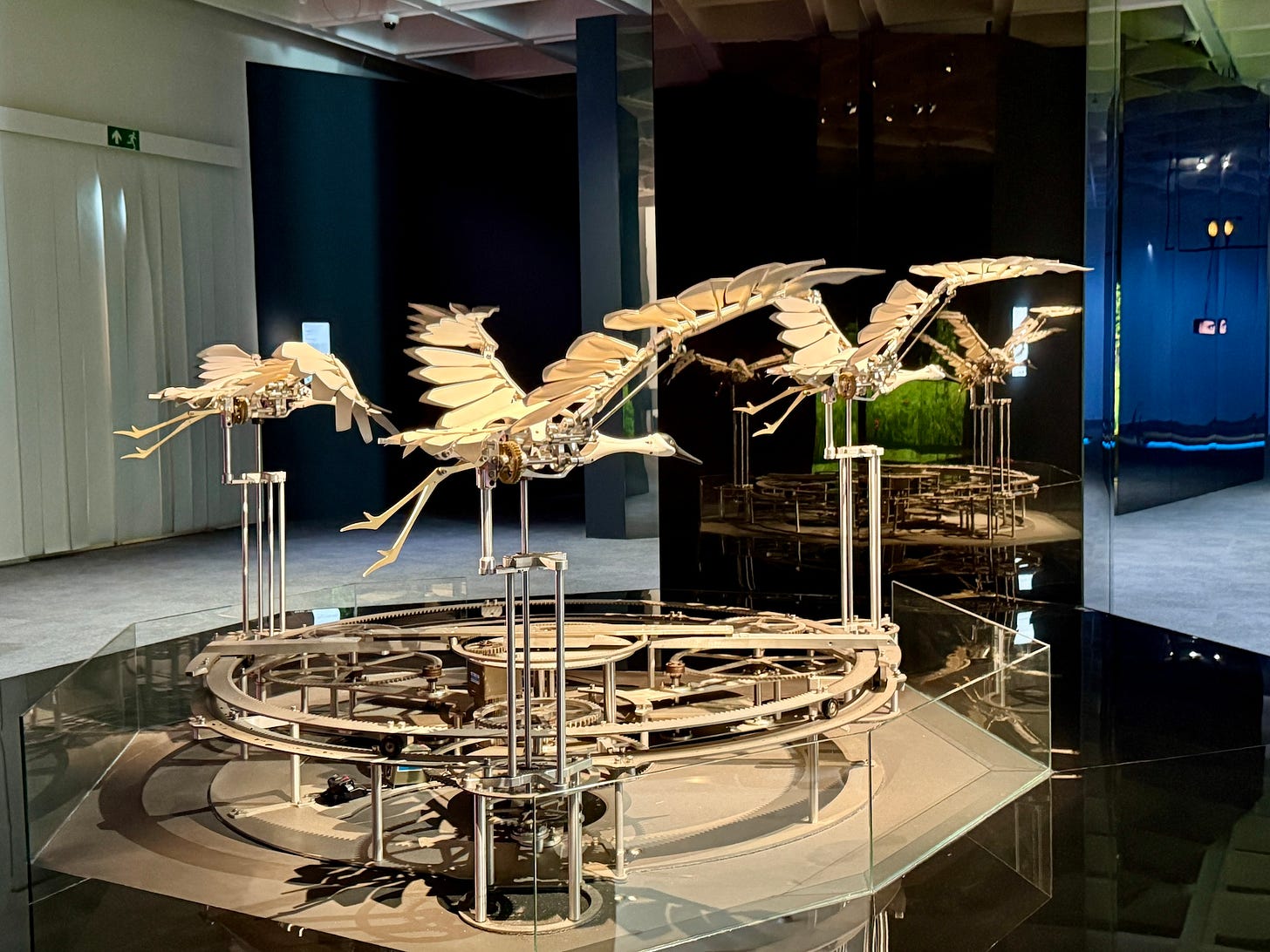
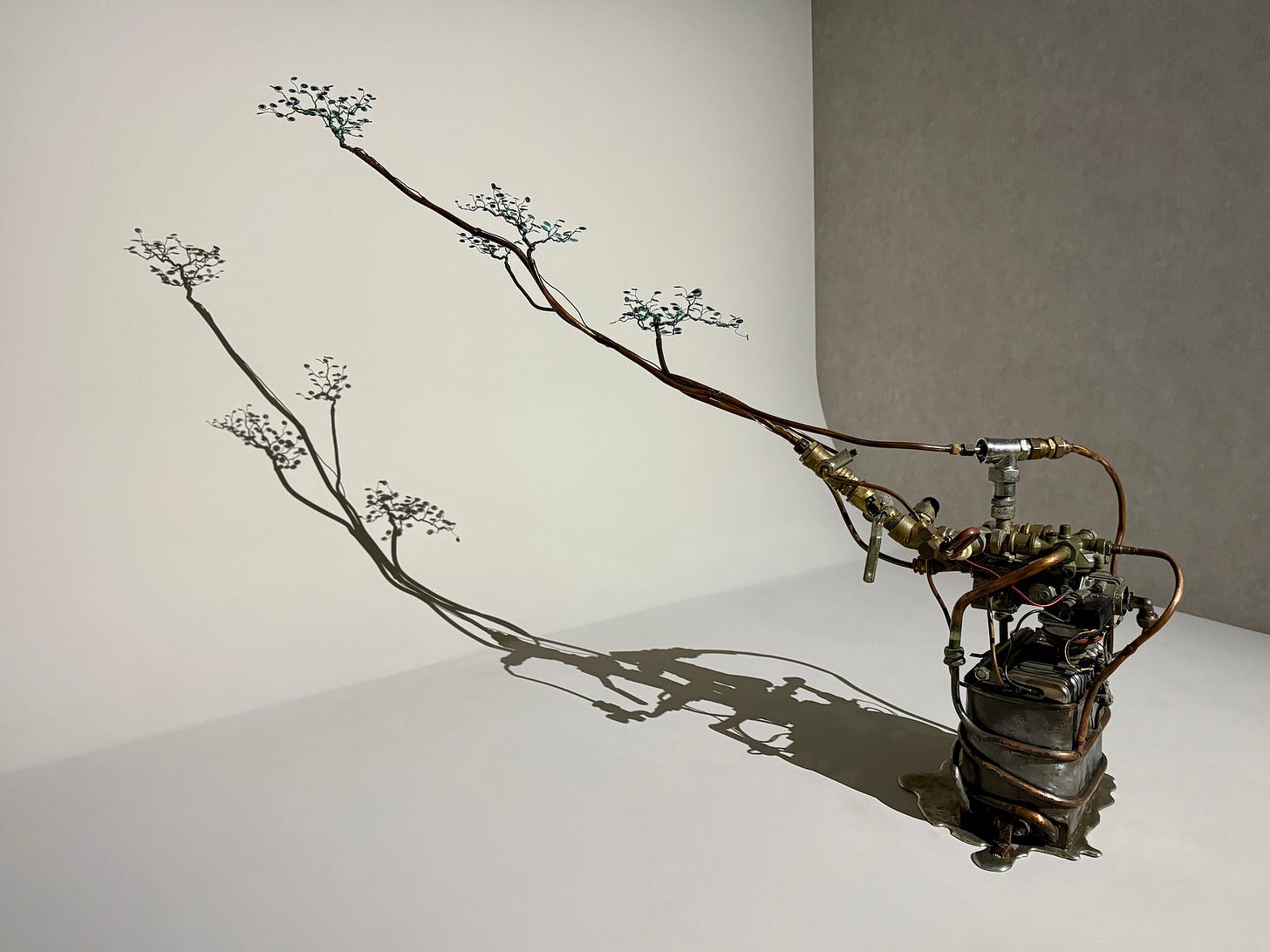
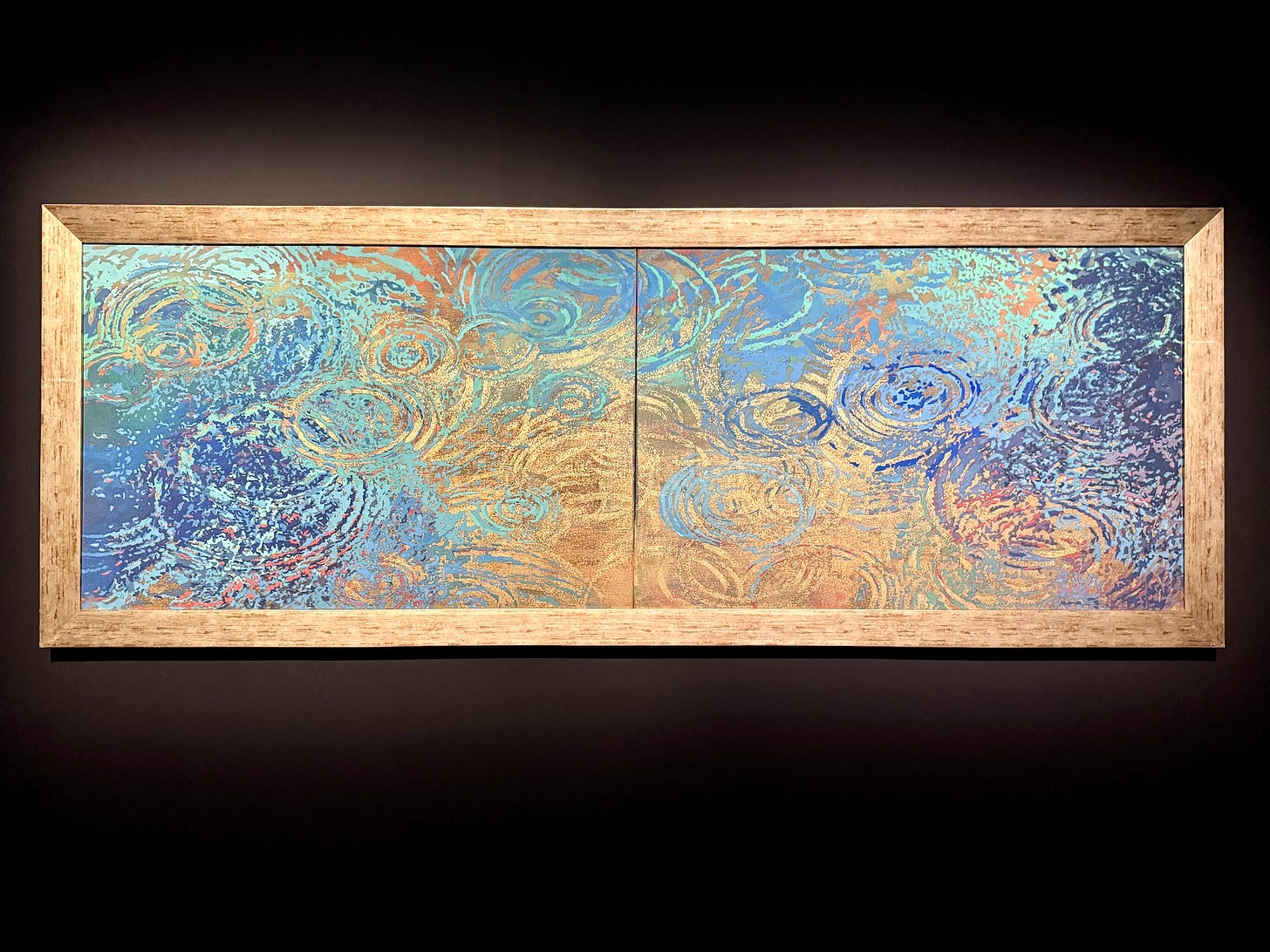
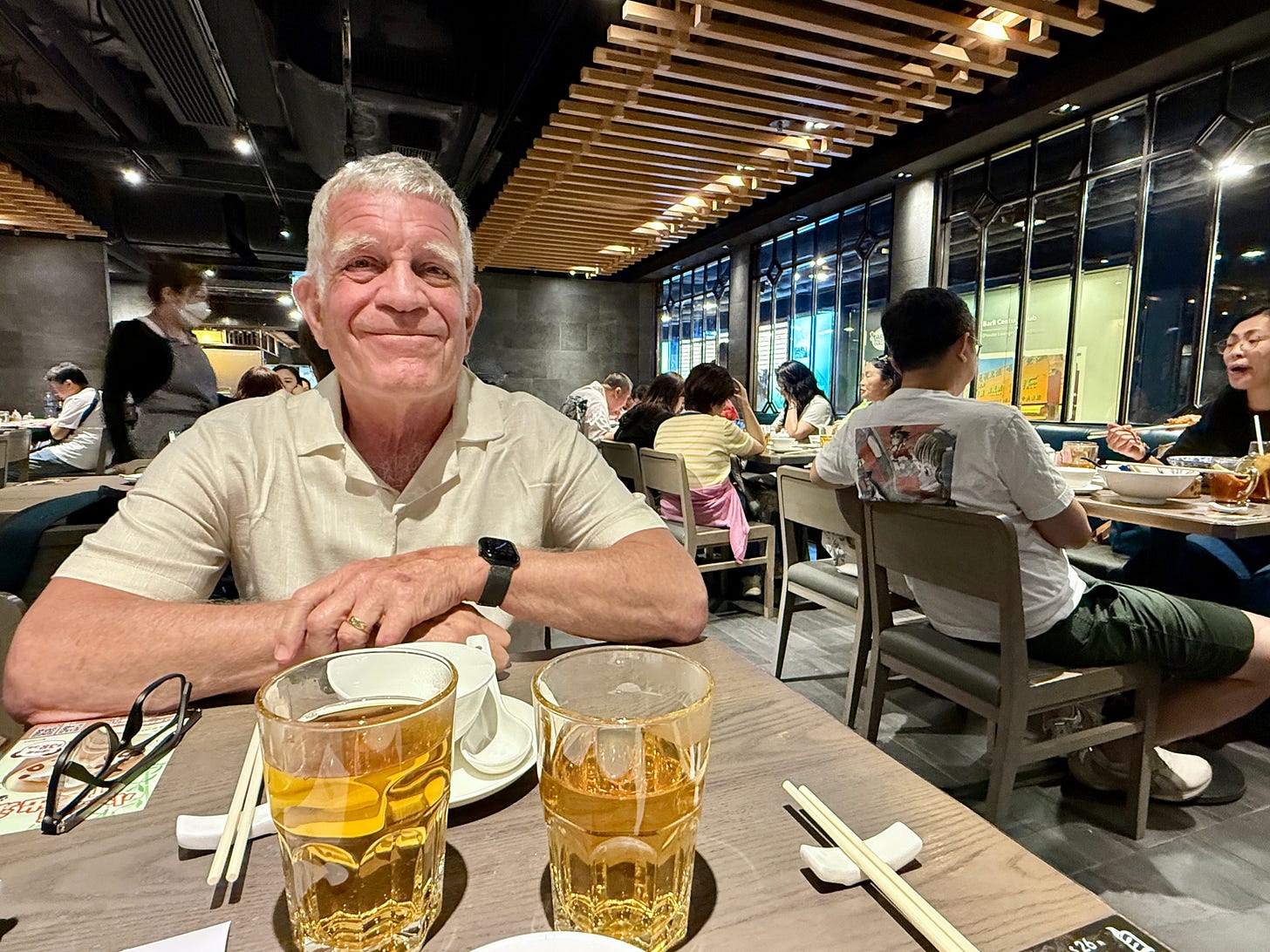
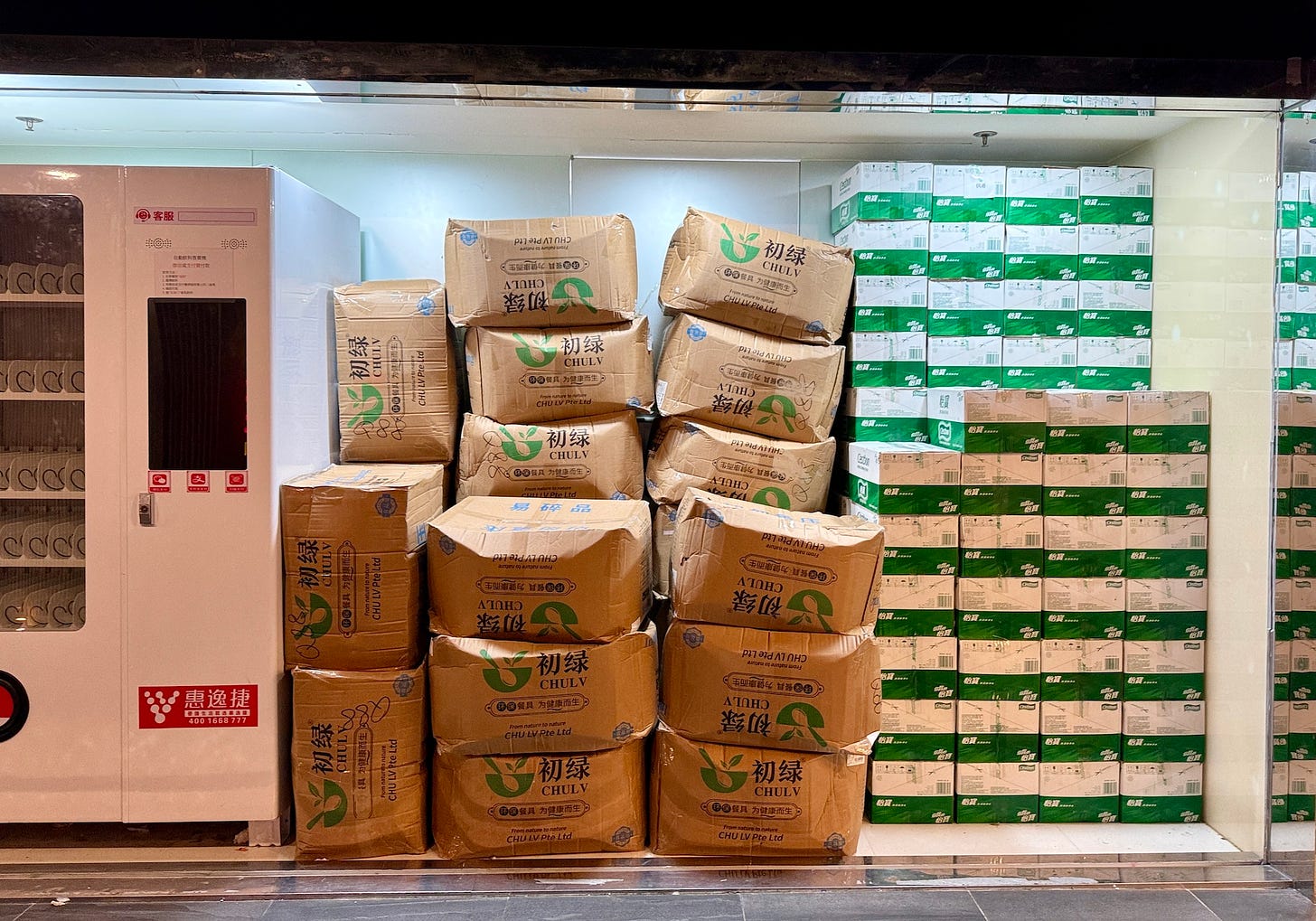
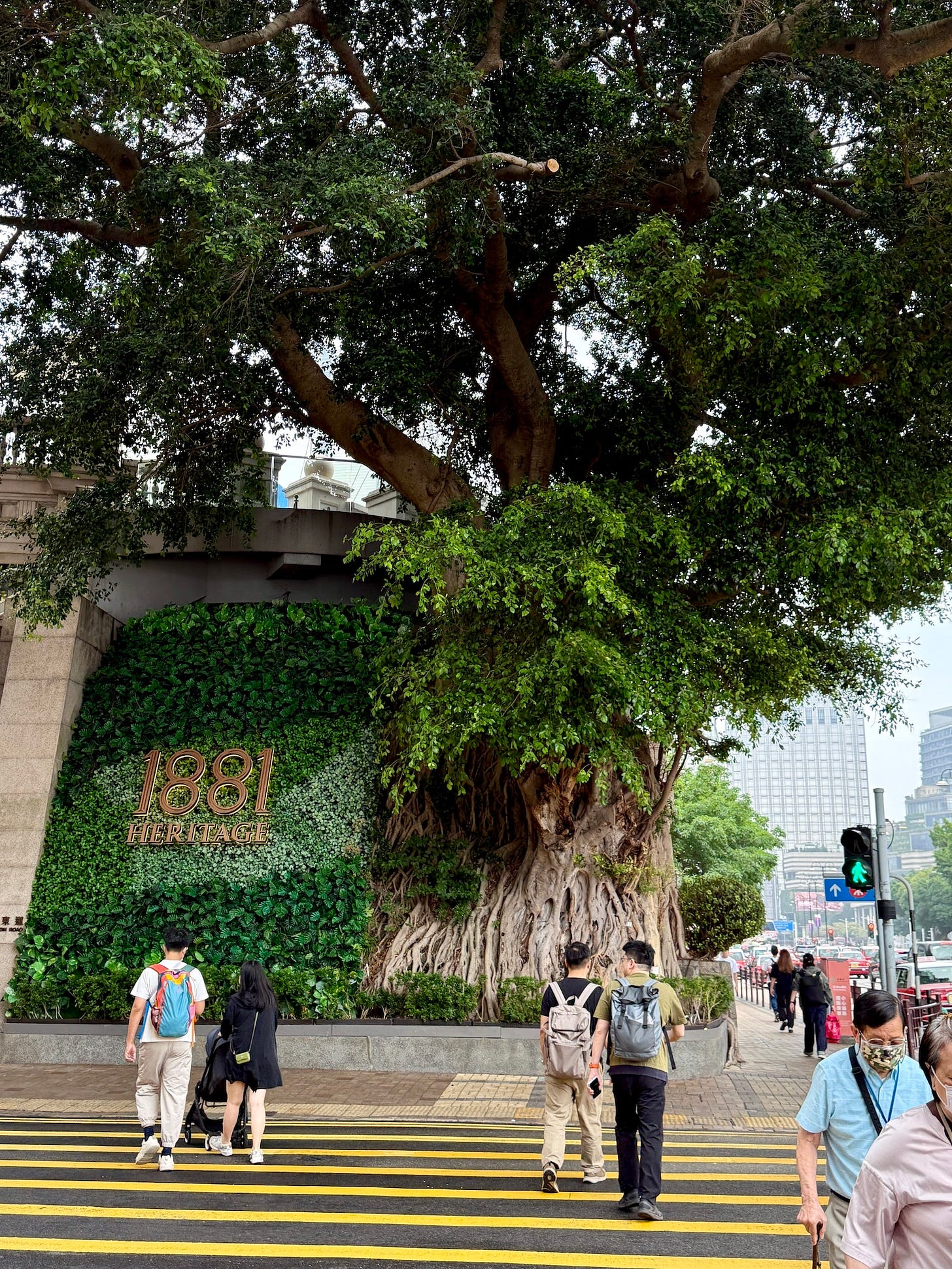
Definitely a visual treasure trove of beautiful art! Love getting to see the pictures.